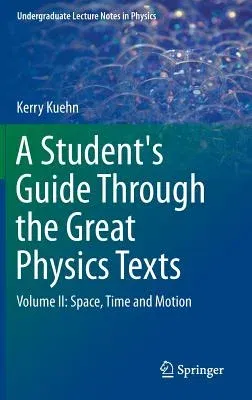Kerry Kuehn
(Author)A Student's Guide Through the Great Physics Texts: Volume II: Space, Time and Motion (2015)Hardcover - 2015, 15 September 2014

Qty
1
Turbo
Ships in 2 - 3 days
In Stock
Free Delivery
Cash on Delivery
15 Days
Free Returns
Secure Checkout

Part of Series
Undergraduate Lecture Notes in Physics
Print Length
380 pages
Language
English
Publisher
Springer
Date Published
15 Sep 2014
ISBN-10
1493913654
ISBN-13
9781493913657
Description
Product Details
Author:
Book Edition:
2015
Book Format:
Hardcover
Country of Origin:
NL
Date Published:
15 September 2014
Dimensions:
23.39 x
15.6 x
2.39 cm
Genre:
Science/Technology Aspects
ISBN-10:
1493913654
ISBN-13:
9781493913657
Language:
English
Location:
New York, NY
Pages:
380
Publisher:
Weight:
743.89 gm